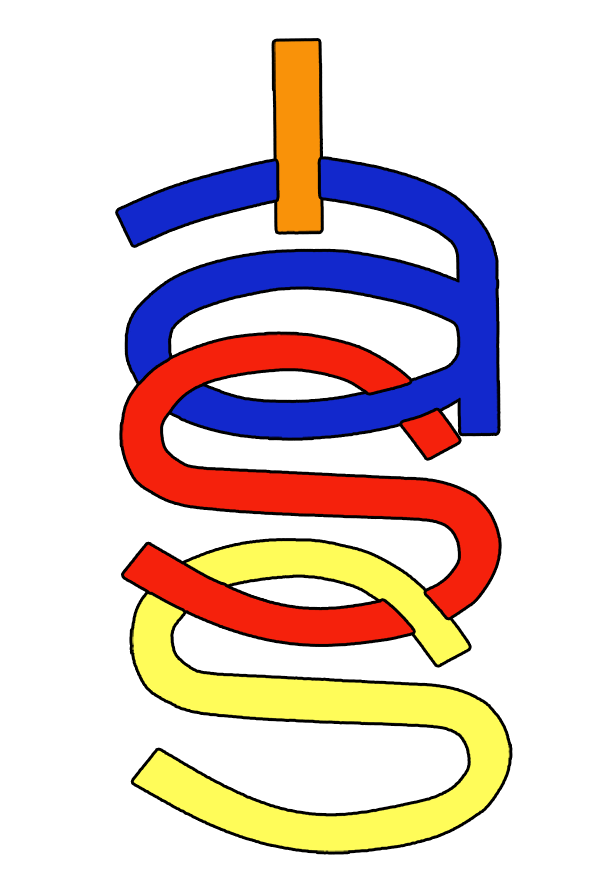Workshop 08:
Flexible Formworks - Double Curved Panel Casting
Tutors:
Roel Schipper, Peter Eigenraam
Date and Time:
Sunday 16 August 2015, 13h00-17h00
Location:
Artis Zoo, Plantage Kerklaan 38-40, 1018 CZ Amsterdam
Track:
ISOFF track (For ISOFF participants this workshop is included in the conference free. IASS participants can also follow this workshop but at additional cost.)
Introduction
Creation of double-curved architectural surfaces in precast concrete is traditionally done with a static formwork, that can be reused multiple times, provided that repeating and identical shapes are present in the building geometry. For non-repetitive geometry, the use of a reusable flexible formwork is much more beneficial. In this workshop you will explore this recently developed technology to make a small architectural object in a group together with 3 or 4 other workshop participants. Apart from offering you some hands-on concrete casting experience, all steps in the process are aimed to inspire you to use this novel manufacturing technology in your own future work. Definitely not another boring workshop: fun, hands-on and practically useful learning experience are guaranteed.

Description
Since manufacturing nowadays generally starts from a digital design, this will be step 1 in our process. Using 3D-photogrammetry, we will digitize a shape from real life as basis for the concrete object that we intent to construct during the workshop.
Step 2: using your own laptop with Rhino/Grasshopper you will manipulate this 3D-shape and split it up in some panels that will be manufactured in real concrete down the line. No high-level Rhino/GH skills are required, we will guide you through this process. The software should be present and running on the computer of at least 1 person of each group of 4-5 persons. From the digital model, we will select the elements that we are going to manufacture.
Step 3: the elements will be prepared digitally and transferred to a coordinate file that will be used to project the edge positions and the height settings of each concrete panel.
Step 4: in groups of 4-5 persons we will prepare a flexible mould to match the shape of the chosen panel.
Step 5: after preparation, 3D-photogrammetry will be used again as double-check of the formwork shape.
Step 6: once the shape is up to satisfaction, we will cast one concrete element per flexible mould, using self-compacting concrete and the process of deformation after casting: we will initially cast the concrete in horizontally levelled position of the mould, and after a proper waiting period of like 45 minutes we will (step 7) deform the mould into its final shape. After curing the concrete panel with plastic foil, the workshop is ended, since the hardening of the elements takes a number of hours. During the conference on Monday, we will ask you to demould your element yourself and put it together with the other manufactured elements into a beautiful piece of architecture!

Tutors
Lecturer / researcher TU Delft, Faculty of Civil Engineering and Geosciences, chair of Structural Building Design
Roel Schipper (1968) is a civil engineer and has been working as a building physics consultant and structural designer since his graduation in 1993. Since 2008 he is connected to TU Delft to lecture in the domain of building engineering. Apart from educational tasks, at this moment he is finishing his PhD research under prof. dipl-ing. J.N.J.A. Vamberský and prof. dr. ir. K. van Breugel around the topic prefabricated double curved concrete panels. Together with a.o. the other workshop host Peter Eigenraam he obtained two grants for further research and application of the flexible mould in practice.

Junior Lecturer TU Delft, Faculty of Architecture and the Built Environment, chair of Structural Mechanics
Peter Eigenraam finished his MSc in July 2013 in the chair of prof. dr. ir. J.G. Rots, on the topic of the flexible mould. During his thesis project he further developed the flexible mould system, and added several findings that enhance its’ operation. From the work during this thesis a patent request was written and filed. During his study, Peter worked as intern at Strukton, Ooms architecten and Architectenbureau van der Stelt en Schoots and as part-time technical designer and mechanical engineer with Ooms architecten and Huisman Equipment. Presently, Peter is working as junior lecturer Structural Mechanics at TU Delft, Faculty of Architecture and the Built Environment.
Minimum number participants:
10
Registration:
€ 90,- (free for ISOFF track)
